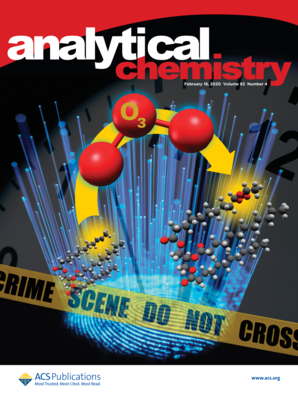
Police have long relied on the unique whorls, loops or arches encoded in fingerprints to identify suspects. However, they have no way to tell how long ago those prints were left behind — information that could be crucial to a case. A preliminary new study in ACS’ Analytical Chemistry suggests that could change. Researchers report that they could link compounds contained in fingerprints with their age.
By determining the age of fingerprints, police could get an idea of who might have been present around the time a crime was committed. This information could, for example, contradict a suspect’s explanation that he or she had visited earlier. Scientists have already begun mining fingerprint residues for clues to the identity of the person who made them, but timing has proven more difficult to reliably pin down. Notably, past research has shown that a gas chromatography-mass spectrometry method succeeded in determining if prints were more or less than eight days old; however, investigators often need more precision. To get a better idea of when prints were deposited, Young Jin Lee and colleagues looked to reactions already suspected to take place in these residues, when ozone in air reacts with unsaturated triacylglycerols left by a fingertip.
Using prints collected from three donors, the researchers tracked shifting levels of triacylglycerols using mass spectrometry imaging, a technique that leaves the evidence intact. They found they could reliably determine the triacylglycerol degradation rate for each person over the course of seven days. But the rate differed among individuals, with one person’s triacylglycerols declining more gradually than the others. The researchers attribute this difference to higher levels of lipids in that individual’s fingerprints. The method also worked on residues that had been dusted with forensic powder. The researchers say that although a large-scale study is needed to better understand how lipid levels affect triacylglycerol degradation, this analysis is a first step toward developing a better fingerprint aging test.
The authors acknowledge funding from the National Institute of Justice.
Abstract follows:
Despite the common use of fingerprints as a trusted means of identification, no method currently exists to reliably establish the time since deposition of latent fingerprints. A reproducible method of establishing latent fingerprint age would allow forensic personnel to determine if a latent fingerprint was relevant to a crime. This work investigates the ambient aging of triacylglycerols (TGs) and other lipids in latent fingerprint residue utilizing matrix-assisted laser desorption/ionization mass spectrometry imaging. Unsaturated TGs were found to undergo ambient ozonolysis resulting in a decrease over time. At the same time, two series of compounds related to the degradation of unsaturated TGs due to ambient ozonolysis emerged with time and were detectable within a single day of aging. Tracking the degradation of unsaturated TGs over time proved to be relatively reproducible in multiple individuals and is suggested as a means of establishing latent fingerprint age.